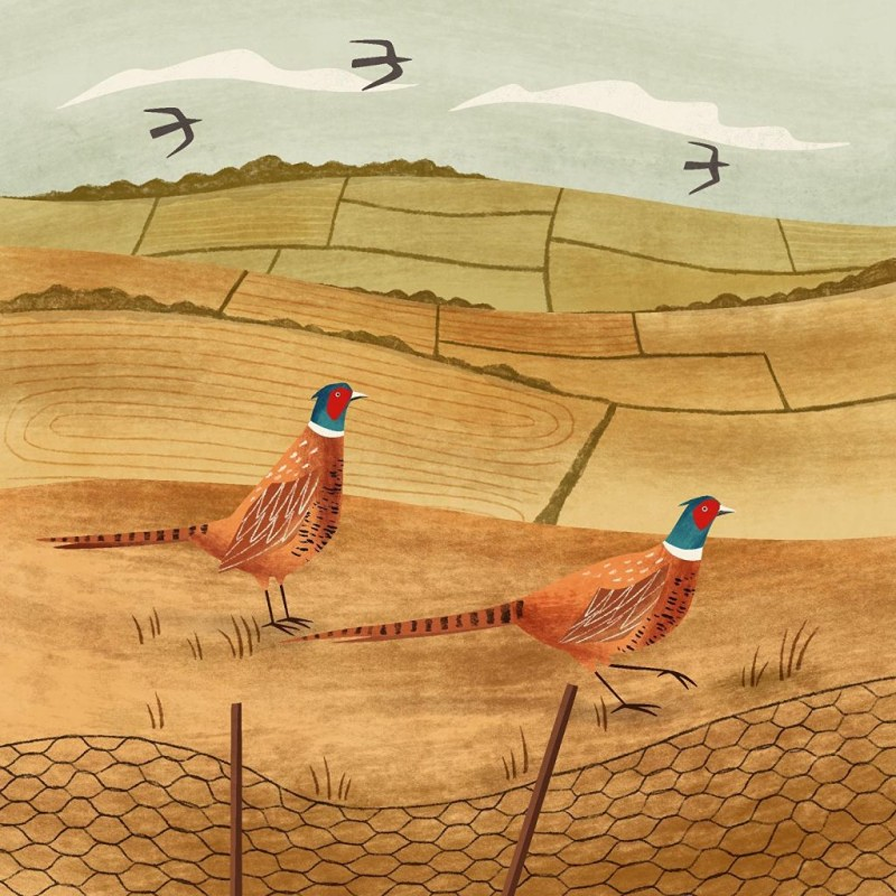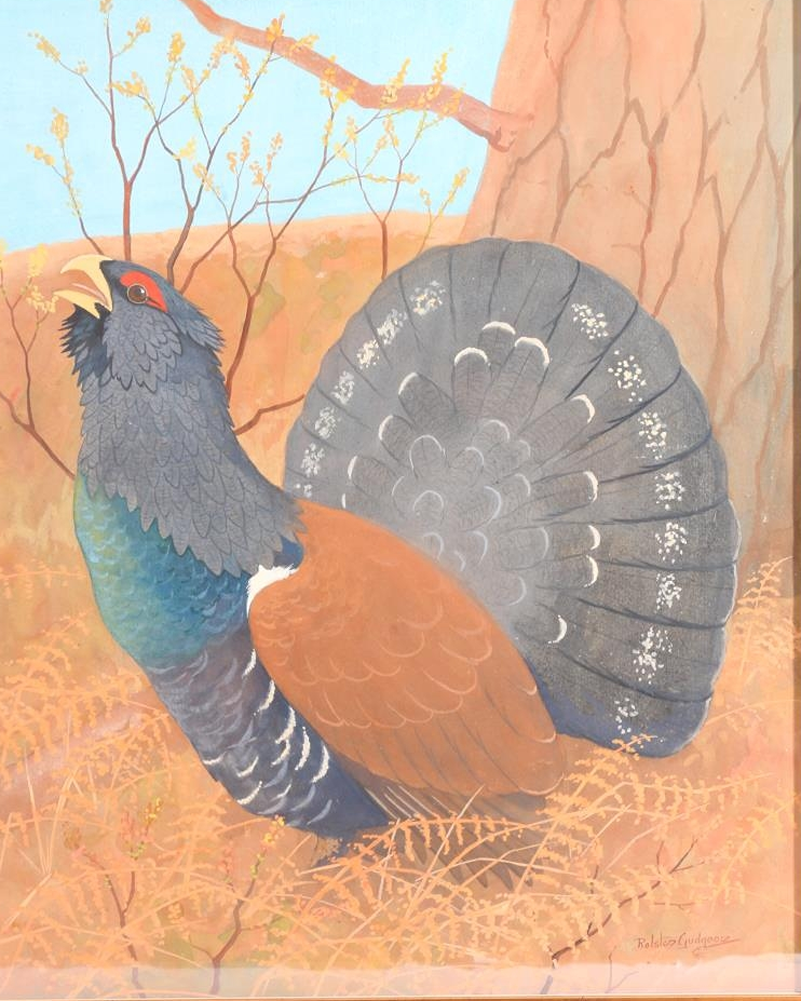Meet England’s Beautiful Ground-Living Birds

England is home to some truly stunning ground-living birds (this is the new term for ‘game birds’ for those of us who don’t think it’s ‘sporting’ to shoot innocent birds out of the sky, just for fun.
Ground-living birds include all of the birds below, along with wild chickens and turkeys. All visually-striking, they also play important roles in our ecosystems.
However, over-breeding birds for shoots puts everything out of whack. Pheasants are bred akin to factory-farms. These Asian birds then eat sand lizards (which are now endangered) and with no road sense, millions are killed in road accidents, which also harm humans.
Heather is also burned for grouse shoots, which leads to flooding.
Ground-living birds are hunted in nature by birds of prey, foxes and stoats. So nature takes care of itself. Foxes also eat them (along with rabbits and rats). If shoots left them alone, foxes would not be raiding bins and hunting garden chicken coops).
Despite hunting being legal, all ground-living birds do have some protection under the Wildlife and Countryside Act.
This means that birds must not ‘suffer unnecessarily’ (like remain injured) and birds must not be released in certain areas that could impact other wildlife (or release lead shot, under voluntary bans).
Contact National Wildlife Crime Unit (anonymous if preferred) to report any concerns.
Pheasants

These Asian birds are known for their croaking calls and vivid plumage of shimmering green, gold and red (the females are less noticeable, idea to camouflage when nesting).
They tend to live in woodlands and field edges, so they can shelter and forage for seeds, grains and insects.
Unfortunately they are hunted extensively (often by people who can’t shoot properly). The birds are injured, picked up and then shot again.
Game meat can sometimes contain lead shot (only a voluntary ban is in place). Abandoned lead shot also harms other creatures, like swans.
Grouse
Only found in Britain, the red grouse has reddish-brown feathers and a distinctive call. It’s one of the most recognisable birds of moorlands, and lives in upland areas dominated by heather, its main source of food. Grouse like to nibble on young heather shoots, seeds and insects.
Male grouse like to fan out their tails and strut their stuff to show dominance (a bit like peacocks). The red grouse has black tails and red ‘eyebrows’. And is the bird that appears on the ‘Famous Grouse’ whisky bottles. The only other grouse species is found in Scandinavia and Alaska.
These wary birds take flight quickly, if disturbed. Again, this bird is hunted on grouse shoots, where burning heather moorlands also removes peat bogs (home to endangered wildlife) and this again leads to increased flooding.
Partridges
England has two species of partridge (and neither of them live in pear trees!) Grey partridges are native to Britain with charming grey and orange feathers, and like to live on arable farmland (numbers have greatly declined, making them a conservation issue).
Red-legged partridges are not native (they come from mainland Europe), but have settled well in our open scrub and farmlands, with their bright red beaks and pink-red legs.
Despite their names, grey partridges have orange faces and black horse-shoe patches on their bellies. This bird layers the largest number of eggs of any bird – up to 19!
Grey partridges are classified as Red as a bird of conservation concern. If disturbed, it prefers to run than fly, but will fly (low to the ground) if necessary.
Woodcocks
Woodcocks are shy and elusive birds, rarely seen by everyday birdwatchers. These ground-dwelling birds have a mottled brown appearance, to blend seamlessly into the forest floor.
These migrant birds arrive in England during winter, journeying from the icy forests of Scandinavia and Russia. Again these beautiful birds are sadly hunted widely.
This nocturnal beautiful birds (with very long beaks) are listed as Red (highly threatened) of conservation concern, leading to petitions to government, asking for them to be excluded from hunting.
They spend days days safely tucked away in forest undergrowth, taking off in zig-zag flight when threatened. This bird sadly has not been treated well in history (its feathers used to be used, to draw the gold stripe on Rolls Royce cars).
Quails
Quails are migrant birds, who travel to Africa for winter, then return to England to breed in late spring. These birds spend most of their time hidden in grass or cereal fields, preferring to run through thick vegetation, than fly.
These small round birds have dark and gold marks on brown backgrounds, males recognised by their black throats. They are common in England (and southern Scotland) but rare in Northern Ireland.
Capercaillies

Critically endangered capercaillies are only found in Scotland. There are real efforts to protect them (hunting has now been banned mostly), as they almost became extinct in 1785.
Their cousins (black grouse birds) have have males known for their elaborate dance, fanning out their tails to attract a mate (similar to peacocks).
Around the size of turkeys, they have yellow bills and red marks above their eyes (smaller females are mostly brown). They gather in woodland clearings to parade their magnificent tail feathers, and make strange gulping clicking sounds, to compete for females.
Loss of woodland habitat led to this beautiful bird becoming extinct in the mid 18th century, and the birds were reintroduced from Sweden around 100 years later.
They are now facing extinction for the second time. Today they only tend to be found in northern Scottish pine forests, where they feed on berries and conifer tree buds and shoots.
Ptarmigans
Ptarmigans are also only found in Scotland (in the mountains) and turn rock-grey in summer and snow-white in winter, making them masters of disguise.
These plump birds are a little larger than grey partridges, and eat seeds, berries, nuts and leaves (juveniles also eat invertebrates).
Why Pheasant Shoots Cause Floods

Flooding is more common these days, but not just caused by rain and rivers bursting banks. It’s caused by removing trees, climate change, outdated building techniques, removing peat and shooting pheasants. Yet an area the size of London is taken over in England for private grouse shoots, which is linked to flooding .
This is because land with bogs (peat etc) is flattened, by burning heather to provide breeding habitats. This means bogs are not able to absorb rain. But as most pheasant shoots are on private estates, nobody can see.
Overbreeding for the pheasant industry leads to millions (with no road sense) being killed on our roads each year. League Against Cruel Sports campaigns against caged breeding, as most pheasants raised to be shot for food or ‘sport’ are housed in conditions similar to battery-farmed chickens. And most hunters are not good shots, so many birds are injured, rather than killed outright.
Over-breeding also leads to impacts on our ecosystems (they eat sand lizards and baby adders, so over-breeding leads to too many being eaten). Some gamekeepers also set traps to target native predators like foxes and stoats, which in turn can trap hares and badgers (or even domestic dogs).
Learn more in Mark Avery’s book Conflict in the Uplands. Looking at the conflict between grouse shooting and nature conservation, this multi-million pound business dominates the hills of the Pennines, North Yorkshire Moors, Cheviots and Scotland.
And backed by powerful lobbyists, to prevent change even though it’s wrecking the hills and impacting habitats of mountain hares and hen harriers.
He also details his campaign with Chris Packham to gain support to ban grouse shooting, which came to light during the devastating floods of 2015, showing how they were all linked.
The Return of the Grey Partridge is the story of how wildlife was restored to an estate in West Sussex, prompted by a collapse in numbers of grey partridges.
Following the estate through the seasons of one year, the book shows how fields are divided up with hedgerows and trees, beetle banks are built across fields, and land is manured (rather than fed artificial fertilisers) and returned to pasture.
A good book on how proper farming methods restores wildlife, but the estate only restored habitats for grey pheasants in order to shoot them. Recently a snare trapped a domestic dog.






